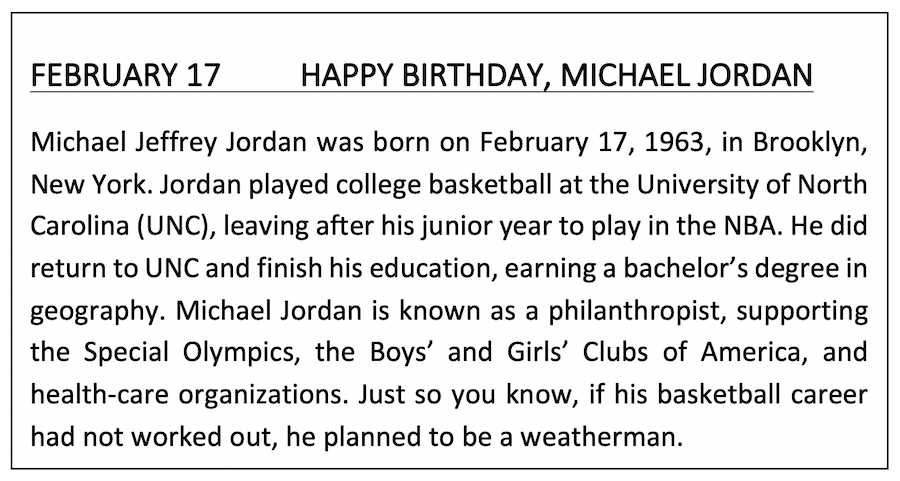More Engaging Ideas for Calendar Celebrations

Reading aloud a well-crafted, beautifully illustrated picture book is yet another opportunity to guide students of all ages to love words, love stories, and love books.
Add in notable birthdays and events from the December-February calendar and you’ve created an engaging series of activities that kids will look forward to!
Reading aloud to tweens & teens
I have come to view reading aloud to middle and high school students as a necessity. I consider this low-key, high-impact literacy strategy a must for your teacher toolbox—no matter the grade, the content area, or ability level.
I have added picture book titles to my growing collection of tidbits of weird information, birthdays of the famous and not-so-famous, and lesser-known celebrations. Now I have even more options for making the most of my instructional time.
Some days a read aloud is for pure pleasure. On other occasions, the read aloud is followed by a teacher-designed lesson that incorporates standards and activities designed to meet the needs of your students.
As part of my introduction to a picture book, I include some snippets of information about the author and/or illustrator. While that information often came from the book jacket or book websites, it sometimes came from meeting an author at a book signing or hearing them speak at a conference.
Because I wanted students to feel a connection to these books, I shared the dedications and the acknowledgements. We discussed how the endpapers complemented the story.
In order for this to be successful, you must select a book that you like. Then practice, practice, practice. It takes practice to be able to hold the book, read, and know when to show the illustrations.
Birthday Celebrations
Let’s explore some birthday celebrations with picture book suggestions for December, January, and February from my Calendar Celebrations series.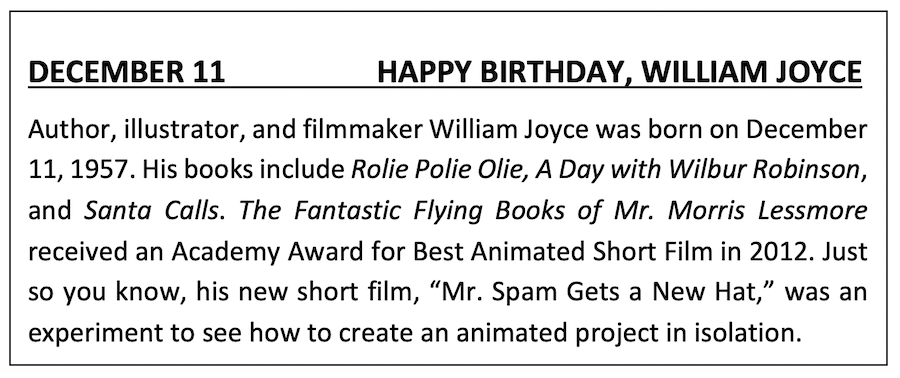
Joyce’s The Fantastic Flying Books of Mr. Morris Lessmore is appropriate for National Book Blitz Month (January) or Library Lovers’ Month (February). This book has numerous instructional possibilities. You may want to extend this read aloud into a teacher-designed activity to align with your state or local standards. One possibility is to show the Academy Award winning movie and have students compare/contrast the book and movie.
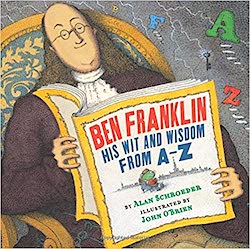
Here’s how it worked in Room A-101. I introduced the book as usual explaining this was a “pick & choose” book—we did not have to begin with A and read all the way to Z. I “picked” a letter and shared the information from that page. For example, the letter “J” is for James, Josiah, Junto, and Jelly. Students correctly predicted that James and Josiah were people in Franklin’s life. Turns out James is his older brother and Josiah, his father. They could not decide if Junto was a person, a place, or a thing. They were completely stumped by Jelly.
As I read from this single page, I moved about the room and gave students a moment to study the illustrations which clearly enhance the text. I saw the lightbulbs come on as they learned what junto meant and why Franklin ate a spoonful of jelly daily.
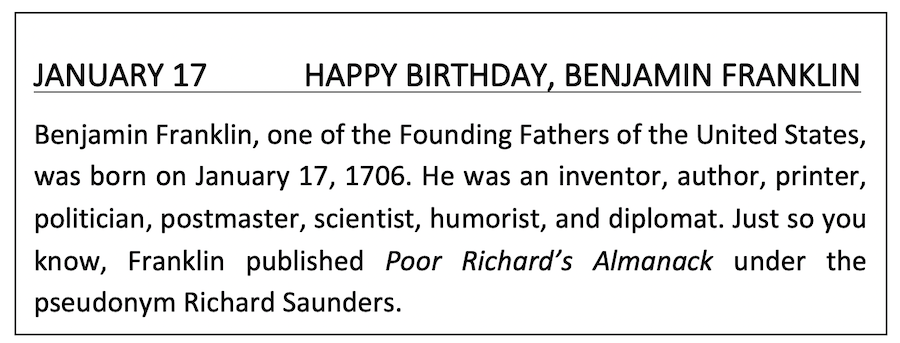
Select one of the many available picture books about Michael Jordan. I chose Salt in His Shoes by Deloris Jordan with Roslyn M. Jordan, his mother and sister. While the lesson may start out as a birthday celebration, do not overlook including it as part of a Social Emotional Learning lesson on developing goals.
The Book Baskets option
Not every book is a read aloud book; not every day is a read aloud day. Since I wanted students to have easy access to books, I created Book Baskets. Using baskets worked well for me, since I had more counter space that shelf space. Students helped themselves to a book if they were waiting on me to meet with their writing group, when they finished the test, or when we had free reading time.
In December I had a basket with December books – Hanukkah, Kwanzaa, Christmas, and Santa Claus. January’s basket might include books for Thank You Month and Martin Luther King Jr. Day. The valentine books, along with the books for President’s Day, came out in February.
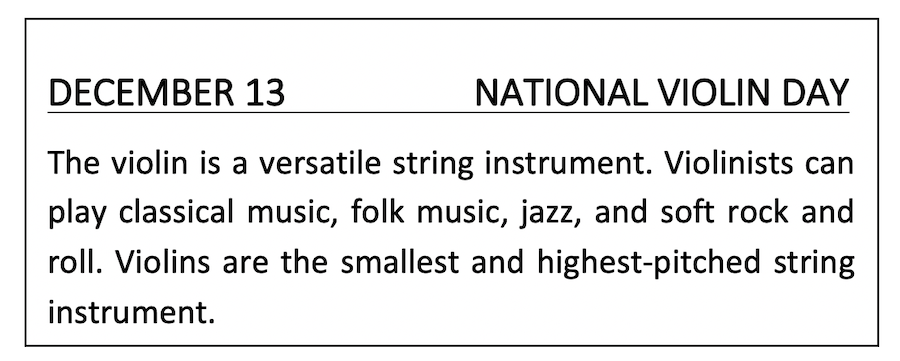
Consider sharing the YouTube video that sparked this book – or tell the story of the 2007 experiment organized by the Washington Post.
Students may not find a Stradivarius as exciting as a 3-D printer. And that is okay. My goals continued to be to build general knowledge, strengthen vocabulary, and reinforce previously taught skills. Using picture books was one way to meet those goals.
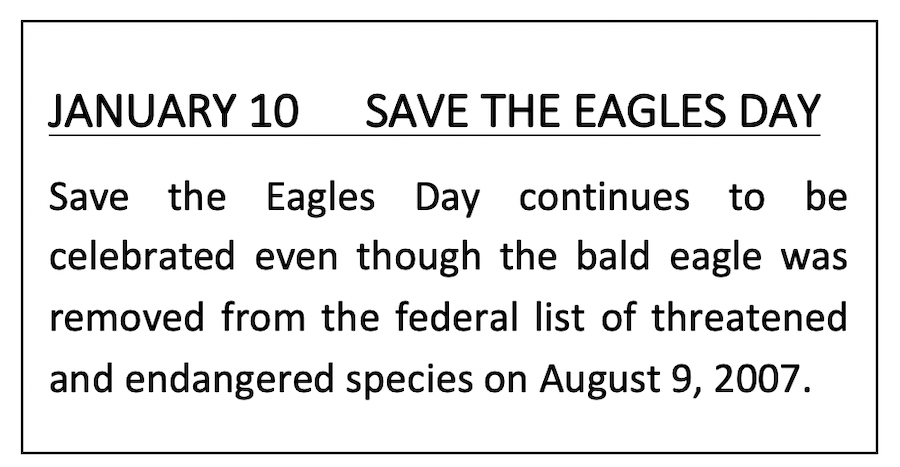
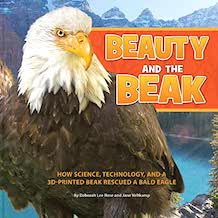
Not every read aloud book has or should have an accompanying lesson. Picture books offer teachers more options for filling in the learning gaps.
While I do not remember the book I had just read to the class, I clearly recall the conversation that November afternoon:
David: Mrs. Anderson, how did you know to do that?
Me: Do what?
David: That thing . . . that thing you do with your voice. You know, how did you know to make your voice sound different?
I was stunned – here was an eighth grader who had not yet made the connection that different characters had different voices. He was not alone. It was up to me to help David and the others learn to hear those voices so they could love words, love stories, and love books.
Make the book available to students after you read it. Some students want to read it again. Some want a closer look at the illustrations. Some want to read it aloud for their own audience. For instance, once a middle schooler stopped by at the end of the day and ask to borrow a book so he could read it to his little cousin that night. YES – he had heard a good picture book!
Anne’s Tips for Building a Classroom Library
- Tell anyone and everyone.
Make your friends and family aware that you need books for your classroom. Ask your principal, assistant principal, supervisor or PTA/PTO president for funds to purchase books.
- Shop till you drop.
Visit the used bookstores. Stop by yard sales, garage sales, estate sales.
- Write a grant.
Check in your community for businesses that offer educational grants. Many companies offer small grants (under $500) with no deadline. Do your research.
And always have your book list available!
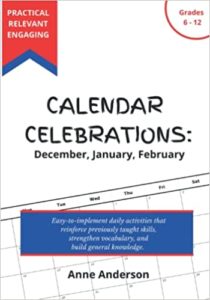
Calendar Celebrations: December, January, February is the second in Anne Anderson’s series on resources for months of the year. (She wrote about the first one here.) Anne has also published articles in IDEAS Plus and Voices from the Middle, publications of the National Council of Teachers of English. She is a frequent reviewer of professional books for MiddleWeb.com

